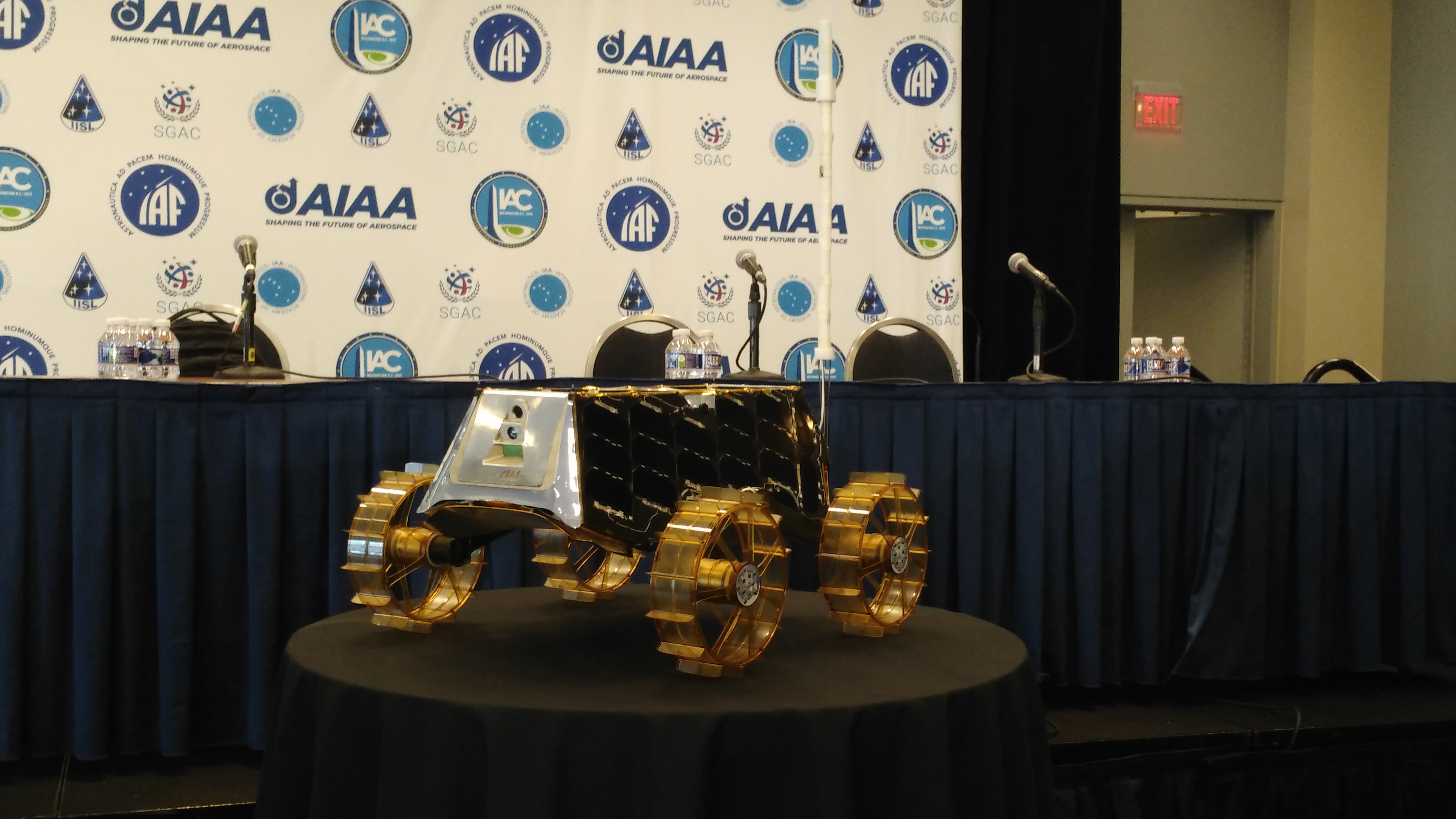Smithsonian Air and Space Museum Acquires Japanese Moon Rover

WASHINGTON — A lunar rover changed destinations from the moon to Earth to live in the ever-popular Smithsonian National Air and Space Museum.
Sorato is a Japanese rover that was supposed to aim for the moon as part of the Google Lunar X Prize competition. That contest expired in 2018, when none of the five finalists could meet the deadline to land the first private spacecraft on the moon.
Sorato's company, ispace, donated the rover to the museum to encourage future generations to carry on with exploration, the company said. The Air and Space Museum, which is located here, is the third most visited museum of any kind in the world, seeing between 5 million and 7 million visitors annually.
Related: Tiny Satellites Launch from Space Station (Photos)
"We are very honored to donate this rover, because we believe we can inspire more people this way in the museum," said Takeshi Hakamada, founder and CEO of ispace, in a press conference Wednesday (Oct. 23) at the International Astronautical Congress.
The museum is currently under extensive renovations to refresh the more-than-50-year-old building, but Sorato will have a spot of honor in the Future of Spaceflight gallery, opening in 2024. The Smithsonian is looking to increase the presence of private companies and international space entities in the museum's exhibits, and Sorato fits perfectly with these two mandates, said the museum's director, Ellen Stofan.
"This is an exciting acquisition for us," said Stofan at the same press conference. "It represents an aspect for spaceflight that is incredibly important to the museum, [which is] what comes next."
Breaking space news, the latest updates on rocket launches, skywatching events and more!
Still aiming for the moon
Sorato is a diminutive machine meant to be as efficient as possible; it is backpack-sized and weighs only 9 lbs. (4 kilograms) and is designed to run on little power on the lunar surface. The spacecraft, moreover, will be a key stepping stone for future lunar machines. ispace plans multiple lunar missions in the early 2020s, some on its own and some as part of NASA's exploration plans.
The U.S. space agency plans to land humans at the moon's south pole in 2024, in line with a directive from President Donald Trump's administration. NASA Administrator Jim Bridenstine is now recruiting International Space Station partners, including Japan, to assist with the agency's Artemis lunar-exploration program.
Even though the Japan Aerospace Exploration Agency (JAXA) is still deciding how it may participate in Artemis, Hakamada said ispace is prepared to support the Japanese government in any work on the U.S. project, such as the lunar Gateway space station. "Gateway and other [lunar] missions, that is very exciting news for us," Hakamada said.
ispace received a round of Series A funding from several venture-capital companies worth $94.5 million a couple of years ago and will use the money to position itself for two lunar landings: the Hakuto-R lander, which will reach the surface in 2021, and a follow-up lander and rover planned to deploy to the moon in 2023.
Earlier this year, ispace decided to drop plans for a lunar orbital mission in 2020 because of the company's participation in NASA's Commercial Lunar Payload Services (CLPS) program, in which ispace is a subcontractor to Draper, a well-established aerospace contractor. The Draper partnership came after ispace had announced the orbiter, according to SpaceNews. Subsequently, ispace dropped that 2020 mission.
CLPS is part of NASA's broader push to not only land humans on the moon, but also build a more comprehensive infrastructure for companies to operate on the moon. NASA aims to be the first customer, but not the only one, for these companies.
Hakamada added that his company had spent about a decade working on Sorato's development, with the organization growing from a handful of engineers to a larger startup of 100 people. X Prize still brought value to the space world even though no company landed on the lunar surface, he said, because "it brought private space industry to new heights."
- International Space Station at 20: A Photo Tour
- NASA's Artemis Moon Program Just Photobombed a Spacewalk (Photo)
- Building the International Space Station (Photos)
Follow Elizabeth Howell on Twitter @howellspace. Follow us on Twitter @Spacedotcom and on Facebook.

Elizabeth Howell (she/her), Ph.D., was a staff writer in the spaceflight channel between 2022 and 2024 specializing in Canadian space news. She was contributing writer for Space.com for 10 years from 2012 to 2024. Elizabeth's reporting includes multiple exclusives with the White House, leading world coverage about a lost-and-found space tomato on the International Space Station, witnessing five human spaceflight launches on two continents, flying parabolic, working inside a spacesuit, and participating in a simulated Mars mission. Her latest book, "Why Am I Taller?" (ECW Press, 2022) is co-written with astronaut Dave Williams.

